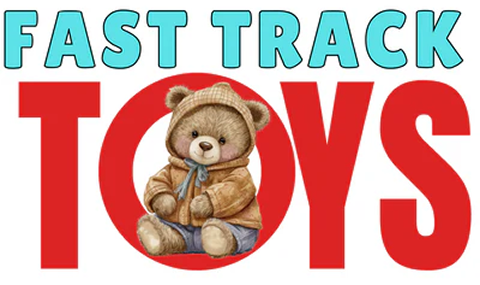At 2 years old, children are curious, energetic, and constantly learning through exploration and play. This is a critical age for developing essential skills like motor coordination, language, problem-solving, and creativity. Choosing the right learning toys can help nurture these abilities in a fun and engaging way. Below, we’ll explore some of the best games and play sets designed to promote learning for 2-year-olds.
Shape Sorters and Stacking Toys
Why They’re Great: Shape sorters and stacking toys help toddlers develop fine motor skills, hand-eye coordination, and shape recognition. These toys also introduce early problem-solving as children figure out how to fit shapes into matching slots or stack blocks without toppling them.
Examples:
- Shape Sorter Boxes: Encourage toddlers to identify shapes and place them in the correct slots, improving their cognitive and motor development.
- Stacking Rings: Brightly colored rings that can be stacked help children learn about size and sequencing while enhancing their coordination.
Puzzles for Toddlers
Why They’re Great: Simple wooden puzzles are fantastic for improving a child’s concentration, memory, and spatial awareness. Large pieces with easy-to-grasp handles are perfect for little hands and can introduce concepts like animals, vehicles, or colors.
Examples:
- Animal Puzzles: Large wooden pieces that depict different animals help kids learn new vocabulary while enhancing their problem-solving abilities.
- Color and Shape Puzzles: These puzzles help toddlers identify shapes and colors, promoting early cognitive development.
Building Blocks and Construction Sets
Why They’re Great: Building blocks allow children to experiment with balance, gravity, and structure. These toys encourage creative thinking and spatial reasoning as kids learn how to stack and build different structures. It also fosters imaginative play, which is key to cognitive growth at this age.
Examples:
- Mega Blocks: These large, colorful blocks are easy for toddlers to grasp and stack, helping them develop fine motor skills and problem-solving.
- Wooden Blocks: Natural, tactile wooden blocks provide open-ended play, allowing toddlers to build, knock down, and rebuild, which stimulates creativity and curiosity.
Interactive Learning Toys
Why They’re Great: Interactive toys that make sounds or have light-up features can capture a toddler’s attention while teaching them basic concepts like numbers, letters, and shapes. These toys promote auditory and visual learning, which is crucial for language development at this stage.
Examples:
- LeapFrog Learning Toys: These toys teach letters, numbers, and colors through songs, lights, and fun sounds, keeping toddlers entertained while they learn.
- Talking Animal Toys: These interactive toys can help toddlers learn animal sounds, new words, and basic counting, encouraging language and cognitive development.
Pretend Play Sets
Why They’re Great: Pretend play sets allow toddlers to role-play everyday situations, helping them develop social skills, creativity, and language abilities. Whether it’s a mini kitchen set, a toy doctor’s kit, or a tool set, these toys encourage imaginative play while also fostering fine motor skills.
Examples:
- Toy Kitchen Sets: Allow toddlers to "cook" and "serve" meals, improving their motor skills while fostering creativity and social interactions.
- Doctor Play Sets: These sets let toddlers role-play as a doctor, helping them develop empathy and familiarity with medical tools, easing fears about doctor visits.
Musical Toys
Why They’re Great: Musical toys are excellent for auditory stimulation and helping children develop rhythm and coordination. Simple instruments like drums, maracas, or xylophones let children explore sounds, patterns, and music, which boosts their auditory skills and creativity.
Examples:
- Baby Drum Sets: These encourage kids to explore different sounds and beats, improving hand-eye coordination and fine motor skills.
- Toy Xylophones: Toddlers can experiment with different notes and sounds, enhancing their auditory processing and creativity.
Push and Pull Toys
Why They’re Great: Push and pull toys are great for developing gross motor skills, balance, and coordination. These toys encourage toddlers to move around, which helps them practice walking, running, and improving their physical confidence.
Examples:
- Push Carts or Wagons: Toddlers love pushing around these toys, which helps improve their balance and walking ability.
- Pull-Along Animals: These fun toys encourage toddlers to pull them along as they walk, building their gross motor skills and coordination.
Learning toys for 2-year-olds offer a fantastic way to encourage development while keeping playtime fun and engaging. By focusing on toys that promote motor skills, problem-solving, creativity, and language development, you can help your child explore and learn through play. Whether it’s puzzles, shape sorters, or pretend play sets, these toys provide valuable experiences that stimulate your toddler’s mind and body.
Selecting age-appropriate learning toys helps foster growth, curiosity, and confidence in children, making playtime a powerful learning experience.


